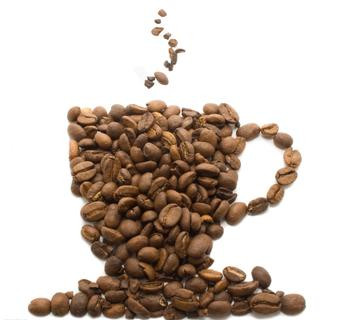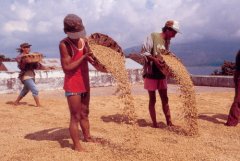Introduction to Green Coffee Bean Treatment--Washing Method
Washing method:

1. Choose beans:
Put the harvested fruit in a water tank and soak for about 24 hours. At this time, ripe fruit will sink, while immature and overripe fruit will float up and can be removed.
2. Remove the pulp:
Use a machine to remove the peel and pulp, leaving only coffee beans wrapped in endocarp. At this time, there is a layer of mucous membrane on the outside of the beans, and the process of washing is to wash this layer of mucous membrane.
3, hair alcohol:
The adhesion of the mucous membrane is very strong and is not easy to remove. It must be placed in the slot for about 18-36 hours to make it alcohol and decompose the mucous membrane. There are two methods of fermentation, namely wet hair alcohol and dry hair alcohol, as the name implies, the former adds water, the latter does not add water. In the process of producing alcohol, the seeds and internal pulp will produce special changes, which is one of the steps that most affect the flavor of coffee. Some farms add hot water or alkanolins to speed up the production of alcohol, which has a negative impact on quality and is not popular with selected coffee lovers.
4, washing:
Farms that use the washing method must build washing ponds and be able to introduce an endless supply of running water. During the treatment, the finished beans are put into the pool and passed back and forth, using the friction of beans and the power of running water to wash the coffee beans until smooth and clean.
5, dry:
After washing, at this time, the coffee beans are still wrapped in the pericarp with a moisture content of 50%. They must be dried to reduce the moisture content to 12%, otherwise they will continue to be mellow, moldy and rotten. The better treatment is to use sunlight to dry, although it will take 1-3 weeks, but the flavor is very good and very popular. In addition, machine drying is used in some places, which greatly shortens the processing time and makes the flavor not as good as that of sun-dried coffee.
6, shelling:
The dried beans can be stored in a warehouse or handed over to the factory for shelling to remove endocarp and silver film.
7, selection and grading:
Like tanning hair, washed coffee has a process of picking and grading, which is used to remove defective beans and ensure better quality, which is then handed over to exporters to sell around the world.
Important Notice :
前街咖啡 FrontStreet Coffee has moved to new addredd:
FrontStreet Coffee Address: 315,Donghua East Road,GuangZhou
Tel:020 38364473
- Prev

A brief introduction to the treatment of Coffee beans-- Solar method
Tanning is a traditional method for the initial processing of coffee beans, and at present, almost all coffee-growing countries such as Ethiopia and Yemen still use solarization to treat raw beans.
- Next

Six common ways of brewing coffee
1. Siphon pot (Syphon) is one of the most popular coffee brewing methods in cafes. Principle of siphon pot: under the combustion of alcohol lamp, when the water temperature in the lower container reaches 92 ℃, the water is sucked into the upper container with coffee powder, and after soaking and stirring, the coffee is returned. Suitable for coffee: slightly sour, medium-bodied coffee. Degree of grinding: slightly thicker than powder
Related
- What is the meaning of lactic acid fermentation with coffee bean treatment?
- How to judge the state of foam by sound?
- How does the latte pull out the unicorn pattern? Come to get for a little trick to improve the flower pull!
- Will flower pulling affect the taste of the latte?
- Do you know the history of coffee?
- The difference between honey treatment and sun washing what is raisin honey treatment?
- What kind of milk can a novice use to make coffee foam to keep the foam longer? The correct method and skills of milking tutorial sharing
- Why do washed coffee beans taste sour? Flavor characteristics of washed Coffee
- Introduction to the skill of how to practice the size and height of water injection around the circle of hand-brewed coffee
- How do beginners practice coffee flower drawing from scratch?

